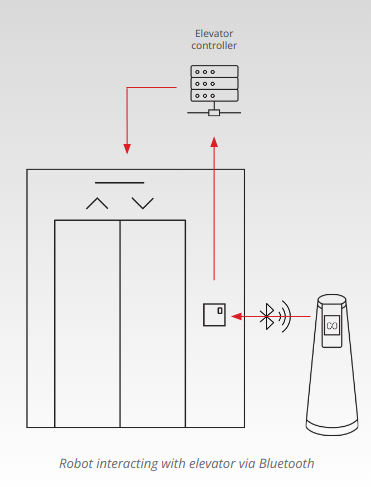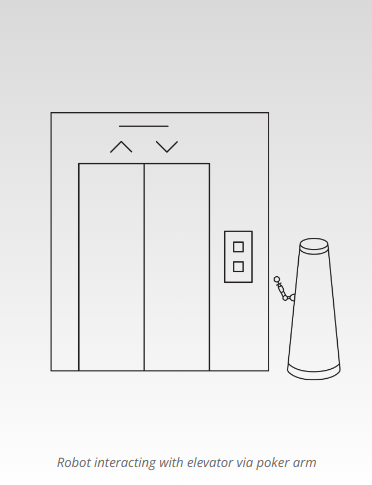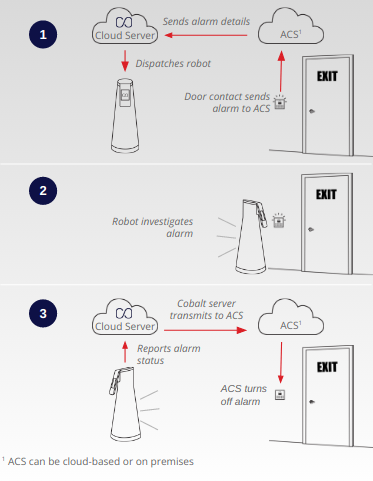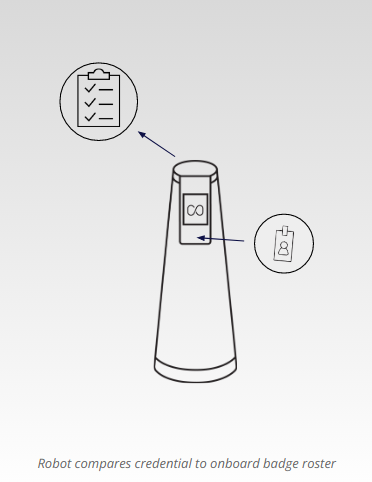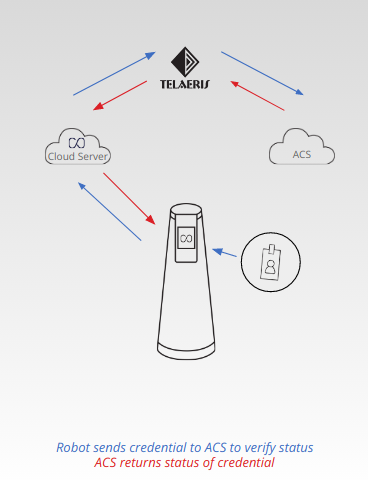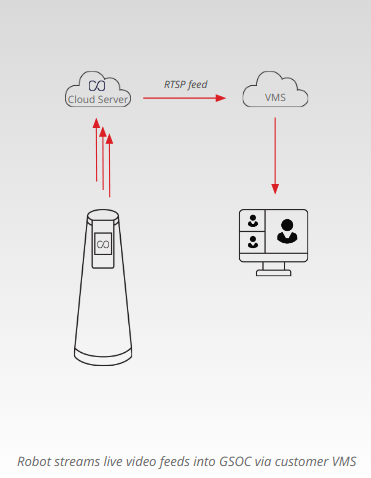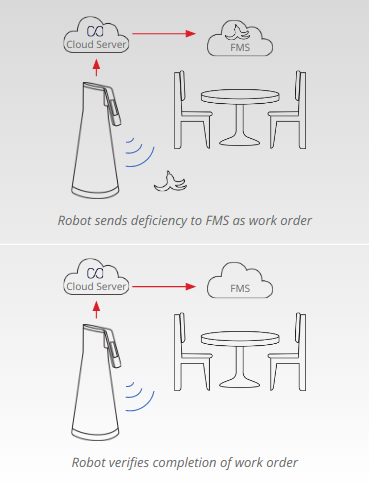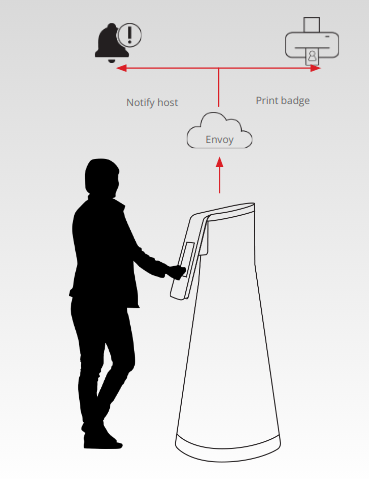An overview of the integrations Cobalt provides and how they work
Why do we have integrations?
Integrations enable Cobalt’s service to interact with and receive information from existing customer systems. Our customers rely on these systems to execute their daily workflows. These connections enable Cobalt to automate customer workflows.
Automating workflows allow Cobalt to take over the day-to-day operations within a customer workplace. The customer realizes significant cost savings because Cobalt can perform these workflows at an unparalleled cost to the customer.
TLDR; Cobalt builds integrations that automate repetitive customer workflows that are currently being performed inefficiently by people.
What integrations do we have?
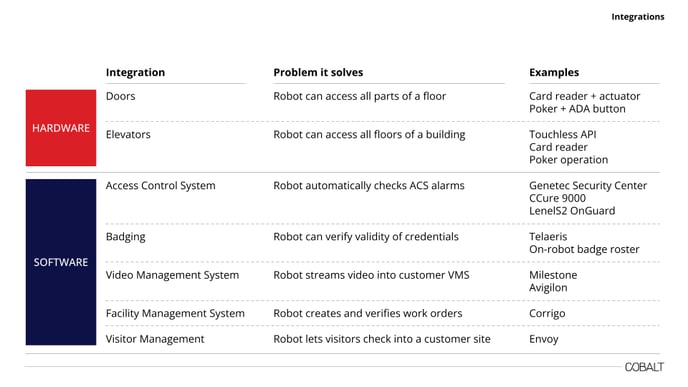
For more information about our roadmap for available integrations, visit Cobalt Integration Roadmap
Hardware Integrations
Door Integrations – Card Reader
What problem does it solve?
Enables the robot to access areas of a building required to execute the customer’s post orders.
How does it work?
The door needs a physical actuator and a bluetooth reader.
The robot receives a credential to access the door
The robot uses its built-in bluetooth device to send the credential to the card reader which then unlocks and opens the door.
The door should remain open for a minimum of 15 seconds.
As the robot is traversing through the door, it looks out for potential tailgating threats.

Door Integrations – Poker Arm
What problem does it solve?
Enables the robot to access areas of a building required to execute the customer’s post orders.
How does it work?
Install a physical arm on the robot (AKA “poker”) to press a handicap door access switch.
After the switch is pushed, the door will unlock and open independently.
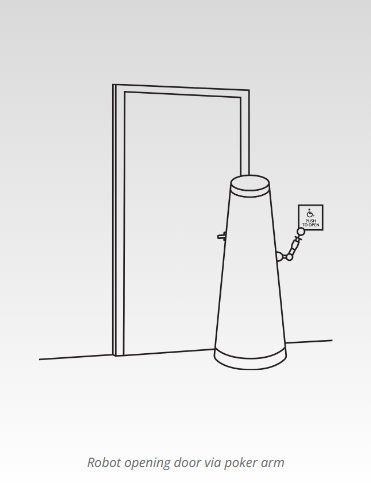
Elevator Integrations – Bluetooth Integration
What problem does it solve?
Enables the robot to access areas of a building required to execute the customer’s post orders.
Elevator Integrations – Poker arm
What problem does it solve?
Enables the robot to access areas of a building required to execute the customer’s post orders.
How does it work?
For most push-button elevators (with physical buttons), Cobalt can install a physical arm on the robot (AKA a “poker’).Software Integrations
What does it mean to integrate with a (software) system?
Cobalt integrates with “X”
You may hear people at Cobalt say, “We integrate with Genetec” or a customer ask, “Do you integrate with Genetec?”
When you hear either of these statements, understand that Genetec is a vendor providing a service to the customer. Genetec happens to be both an ACS and VMS provider.
So the answer is, we do integrate with Genetec, and we provide the following capabilities and their associated workflows:

Access Control System Integrations
What problem does it solve?
The robot investigates ACS alarms automatically instead of a guard doing it
How does it work?
Cobalt operates a secure server in the cloud that will periodically poll for new alerts from the customer’s ACS.
- When an alert arrives, our server automatically dispatches the robot to the scene of the alert.
- The robot investigates and determines the source of the alert.
- Finally, the robot can clear or escalate the alert as appropriate and return to its patrol.
What software do we support today?
Genetec, LenelS2 OnGuard, and CCure 9000
Badging Integrations - On Robot
What problem does it solve?
Integrating the robot’s badge reader with the ACS enables the robot to
- Verify personnel via badge challenging
- Stand guard at doors where the card reader is malfunctioning
How does it work?
The robot stores an encrypted, uploaded badge roster locally in its memory.
Whenever an employee presents a badge to the robot, the robot compares the presented badge to the onboard roster for identification and creates an alert if they are not valid.
Badging Integrations - Live Connection
What problem does it solve?
Integrating the robot’s badge reader with the ACS enables the robot to
- Verify personnel via badge challenging
- Stand guard at doors where the card reader is malfunctioning
How does it work?
When an employee presents a badge to the robot, the robot sends the credential to the Telaeris API via Cobalt’s cloud services.
The Telaeris API will respond with the credential status, which the robot will then display to the employee.
This solution requires the customer to install the Telaeris product on their ACS for live querying of the ACS.
What software do we support today?
Genetec, LenelS2 OnGuard, and CCure 9000
Video Management System Integrations
What problem does it solve?
This integration lets customers ingest the robot’s video feeds into their video management system (VMS)
How does it work?
Each Cobalt robot feed has its own unique URL
Cobalt will provide the customer with credentials to the URL
The customer VMS streams the feed from the URL over a video protocol, RTSP
As the robot moves around the site, the video feeds transmit in real-time to the customer’s VMS
What software do we support today?
Genetec, Milestone, and any VMS that supports RTSP over TCP.
Facility Management System Integrations
What problem does it solve?
The robot can create work orders for items that are out of order and automatically verify the work has been completed.
How does it work?
When the robot identifies a deficiency, the specialist verifies the issue and has the robot generate a work order in the facility management system’s native format.
Once the work order is actioned, the robot will return to that point on its next patrol, verify the work order is completed, and close out the ticket.
What software do we support today?
Corrigo
Visitor Management Integrations
What problem does it solve?
By installing this software on the robot’s screen, the robot can act as the receptionist and replace this function for on-site personnel.
How does it work?
The customer installs the Cobalt Visitor Management and Escort app in the Envoy app store, then connects it to their Cobalt account.
When visitors approach the robot, they sign in via its screen.
The robot sends that information to the Envoy server that will notify the host, print a badge, or trigger any other behaviors integrated with your Envoy account.
What software do we support today?
Envoy
